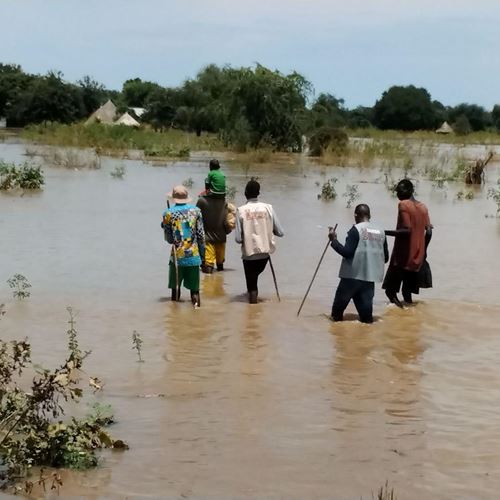Over the past eight years, Ethiopia was hit by 6 meteorological droughts in addition to 4 below-average rainy seasons. The scale, duration and severity of the drought episodes have intensified notably, and the country recently experienced the worst drought in recorded history, which gave way to rains and flash flooding.
The ripple effects cannot be understated, especially as communities’ resilience is eroded and coping mechanisms are depleted by the frequency of the shocks. Without pasture and access to water, close to 7 million goats, cows and camels have perished since late 2021, and full heard recovery may take up to seven years.
“I have lost all my cattle due to the drought which lasted years. I have travelled to several places with my family in search of water and pasture but I was not lucky. Currently, I am living in a government shelter with my kids. I have lost everything and I am hoping for a miracle from God,” says Mustafe, whom DRC talked to in Jijiga in April 2023.
The intense flooding and overflowing of rivers which started mid-March led to large-scale livestock deaths and damaged farmlands, further crushing livelihoods.
As the loss of assets is coupled with high inflation, the consequences on people’s purchasing power and subsequent food security are dramatic: while the sale of a goat could buy 167 kg of maize three years ago, it now procures only 36 kg according to the Food and Agriculture Organization of the United Nations (FAO). Over 11 million people are estimated to be food insecure across the three regions (OCHA).
The drought and flooding are also an important drivers of internal displacement as people search for food, water and pasture. According to the International Organization for Migration (IOM), no less than 500,000 people were driven into displacement between January 2022 and March 2023 due to the drought, including 372,000 in Oromia alone. As flash floods wash away homes, more than 71,000 people have been displaced in Oromia, Sidama, SNNP and Somali between March and May 2023. The floods have also exacerbated health risks, including cholera.
“The context and needs are evolving extremely rapidly, and the response must be scaled up. People do not have time to recover in between climate shocks – over the past three years Ethiopia has faced drought, floods and desert locust. The time to act and support community resilience is now,” says Aurélie Leroyer, DRC Country Director in Ethiopia.
With the needs expected to remain high through 2023, DRC will continue to respond in affected areas, including those hard to reach
DRC’s protection assessments in Dirindir and Eldub IDP sites in Somali region revealed major protection risks including child labour and gender-based violence. Based on these findings, DRC is rolling out individual protection assistance, established gender-based violence case management and strengthening community-based protection networks.
DRC also provides emergency water supplies to over 26,500 people in the Somali region through water trucking, while concomitantly working with water management committees to ensure the operation and maintenance of key water distribution points.
DRC will continue to work with the Government of Ethiopia as well as humanitarian and development partners to meet the direct needs of affected populations while paving the way for recovery.
